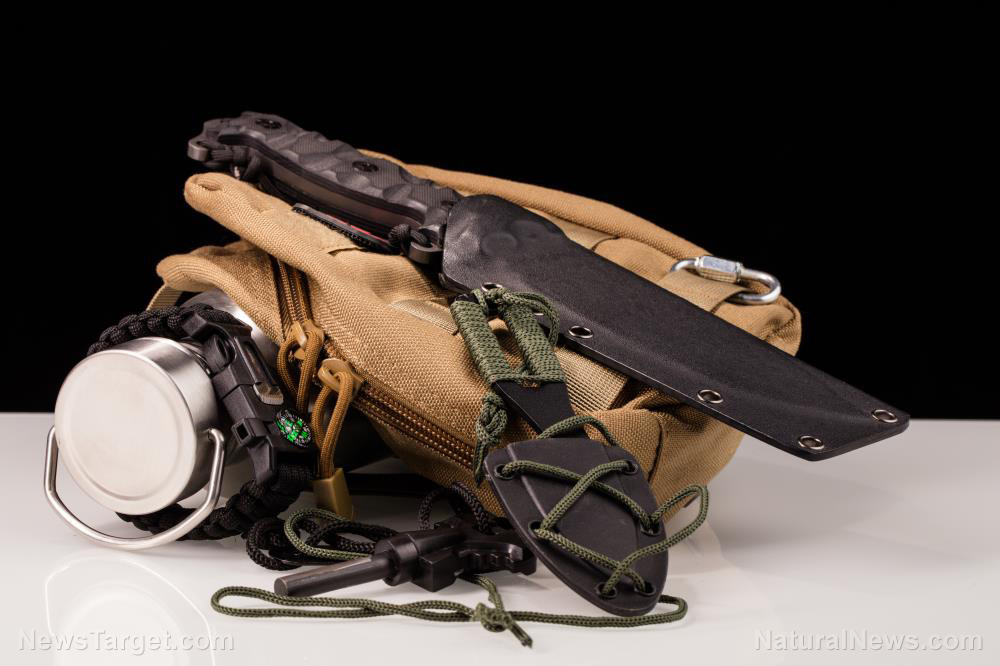Is it time to bug out? Tips for deciding when to leave
05/29/2019 / By Edsel Cook

A prepper can set up the most thorough preparations for leaving the house and moving to a safer place when SHTF. But how can one determine the best time to bug out? (h/t to AYearWithoutTheGroceryStore.com)
Solo preppers have it easy. They only need to worry about themselves. If necessary, they can drop everything and get out of Dodge. However, some preppers may have family or friends that they want or need to bring with them. These traveling companions may or may not also be preppers.
As a prepper, you need to bring up the idea of bugging out to the people coming along for the trip. You must cover the specifics, such as the seriousness of the situation, the proximity of the danger, and any special needs among your companions that can force you to bug out earlier or later than planned.
You need to have this talk before the need to bug out ever comes up. It is much easier to reach an agreement in a calm environment, compared to when a natural disaster or crisis comes within a stone’s throw of the house. (Related: Prepper hacks: How to make modular bug-out bags.)
Consider the consequences of bugging out (or not)
You must cover the consequences of leaving too early or lingering for too long. You must also consider the emotional implications for any children or other people who can be easily affected by the crisis at hand. It is best to prepare such companions for the emotional burden of bugging out when the world seems to be falling apart.
The rule of thumb is that it is safer to bug out sooner rather than later. Better safe than sorry. But this rule is not ironclad.
Sponsored solution from the Health Ranger Store: The Big Berkey water filter removes almost 100% of all contaminants using only the power of gravity (no electricity needed, works completely off-grid). Widely consider the ultimate "survival" water filter, the Big Berkey is made of stainless steel and has been laboratory verified for high-efficiency removal of heavy metals by CWC Labs, with tests personally conducted by Mike Adams. Explore more here.
Most preppers cannot afford to set up or maintain the elaborate doomsday shelters in the wilderness that are often seen in books or movies. Instead, they will settle for a place that is far enough from the danger zone to let them breathe in relief. They may have relatives or friends who are willing to host them for a couple of days until the trouble blows over. Or they can rent a room at a hotel or motel in the next town or city.
However, you need to set up options for the possibility that you might not be able to access the safe area. The friendlies you are relying on might not be able to take you in at the last minute, while hotels could end up fully booked by other people with the same ideas. You need to come up with contingencies in case you could not follow through with your original plan.
Keep an eye out on a disaster as it is happening
Last but definitely not least, preppers should stay on top of the latest developments regarding the crisis at hand. Leave your television on a news channel, keep your radio on a similar channel, or even keep watch outdoors (preferably at a safe and hidden spot).
If you have access to the internet, you can use social media to stay up-to-date on the crisis. Twitter, for example, often delivers live coverage of spectacular events.
One technique is to use the hashtag function of Twitter to keep track of a potential crisis. If the event is getting too close for comfort, it may be time to bug out. Social media may also be a good way to stay in contact with other preppers who need to meet up before heading to a prearranged shelter.
Sources include:
Tagged Under: bug out, chaos, Collapse, crisis, disaster, off grid, preparedness, prepper, prepping, shelters, SHTF, survival, survivalist
RECENT NEWS & ARTICLES
COPYRIGHT © 2017 COLLAPSE.NEWS
All content posted on this site is protected under Free Speech. Collapse.news is not responsible for content written by contributing authors. The information on this site is provided for educational and entertainment purposes only. It is not intended as a substitute for professional advice of any kind. Collapse.news assumes no responsibility for the use or misuse of this material. All trademarks, registered trademarks and service marks mentioned on this site are the property of their respective owners.



















